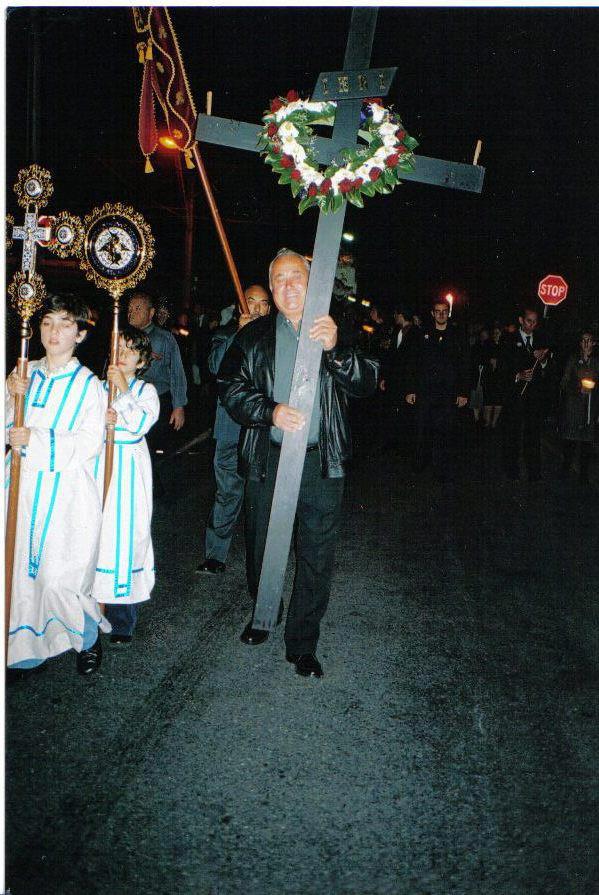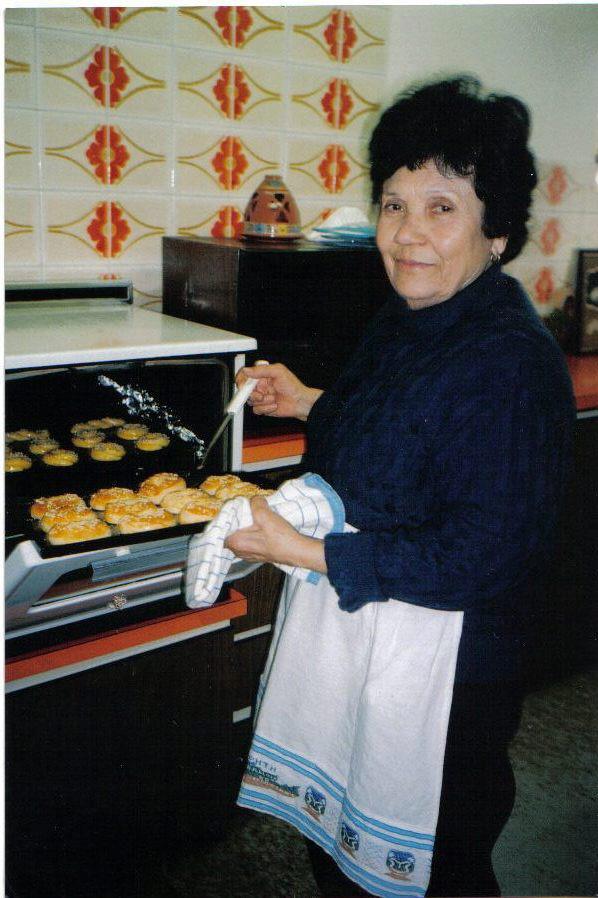Greek Orthodox Easter

The Greek Orthodox Easter (Pascha) season starts with Great Lent (Megali Sarakosti) seven weeks before Easter Sunday.
It is a period of fasting and repentance with Clean Monday marking the the beginning of the forty day fast so that Holy Communion (symbolizing a Christian's spiritual union with the Body of Christ) can be taken at church during Holy Week.
The forty day fast means abstaining from food that contains blood such as meat, fish and poultry as well as products that come from animals with blood such as dairy products like milk, cheese, butter and eggs.
Like every Greek Orthodox Christian, Kathy Papas and her family, the Greek Orthodox Easter has always been a spiritual and festive celebration of the Crucifixion and Resurrection of our dear Lord, Jesus Christ to everlasting Life and Glory. Your first paragraph ...
Good Friday

On Good Friday, women and young girls traditionally decorate the Epitaphios (funeral bier) at their church with flowers, flower petals and sprinkled with rosewater to receive the symbolic Body of Jesus when He is taken down from the Cross.
The Good Friday evening church service mourns the Death of Jesus Christ on the Cross with the bells of every Orthodox Church slowly tolling the Death of Jesus Christ and flags are lowered to half mast.
The Cross of Christ, adorned with a flower wreath and the flower-decorated Epitaphios are then carried in a moving candlelit procession through the streets around the church boundaries.
The priest and chanters, chant the sacred Orthodox lamentation hymns, followed by the procession of Orthodox faithful as they walk in the Footsteps of Jesus on this day - the day our dear Lord, Jesus Christ closed His Eyes in death on the Cross in the 1st century AD.
Holy Saturday
On Holy Saturday evening, the Liturgy of the Resurrection (Anastasi) reaches its climax at midnight when the priest announces that Christ has Risen to everlasting Life and Glory.
In Greece and throughout the world, wherever there is an Othodox church, bells toll in joyful celebration.
Fireworks are lit and ships in every Greek harbor, sound their sirens.
The Easter Candle in every church (representing Christ as the Light of the world), is lit and the Holy Light is then passed from person to person to light their own candles. At that moment, every Greek Orthodox congregation around the world will then sing the beautiful Byzantine hymn, Christos Anesti.
As the church bells joyfully toll the Resurrection of Jesus Christ, the faithful will take their Holy Light back to their homes where they will trace a smoke Cross three times with the flame above their front door to help protect their house for the coming year. They will then light their kantili (candelabra) before their icon stands and try to keep their Holy Light burning throughout the year symbolizing the Light of the World (Jesus Christ) has returned and has blessed their home.
Traditional Food to Break the Forty Day Fast
At home, Kathy's family will gather in the early hours of Sunday morning to break their forty day fast.
Traditional Easter food eaten on this night, straight after the Anastasi (Resurrection) church service are mageritsa (dill soup made with lamb or goat tripe and lemon juice), tsoureki sweet bread loaves, koulourakia (Easter biscuits) and the hard-boiled red eggs with its traditional challenge to crack each other's eggs that is enjoyed by young and old.

Easter Sunday (Holy Pascha)
Easter Sunday (Holy Pascha) is a day of festive celebration as every family will get together to celebrate their rich Easter customs.
In Greece, the Resurrection Table on Easter Sunday with family is truly a feast.
The main attraction being the whole spiced lamb, goat or pork (representing the Lamb of God) on a spit slowly roasting over a charcoal fire from the early hours of the morning.
In every Greek kitchen around the world, housewives and daughters prepare all the mouth-watering accompaniments that will be served along with the hefty portions of meat cut straight from the spit (souvla).
On Kathy's beautifully decorated festive, Easter Sunday Table, the traditional red eggs are piled high in baskets and ready to be cracked with other members of the family that are so symbolic of the Greek Orthodox Easter, the tsoureki sweet bread loaves and her unforgettable koulourakia (Easter biscuits).
Bowls are filled with a variety of salads, there are meat and seafood platters, vegetable and rice dishes as well as fruit baskets, Easter cakes, sweets and breads.
And, of course, soft drinks as well as traditional Greek wines and spirits like Retsina and Ouzo flow freely at every festive Resurrection Table on this special day of our dear Lord, Jesus Christ's Resurrection to everlasting Life and Glory.
"Jesus said to her, “I am the resurrection and the life. Whoever believes in me, though he die, yet shall he live".
- John 11:25

Ezine Articles Author Link
Click on the Link Below

Newsletter Opt-in-Form
The Keen Traveler
Recent Articles
-
When all we Have is God
Dec 20, 25 04:21 AM
When all we have is God in times of loss hardship or loneliness God's Presence offers refuge, strength and a purpose for the future. -
Beauty of Christmas
Dec 11, 25 04:22 AM
The beauty of Christmas is the celebration of the real Christmas Story with the Birth of Jesus Christ, the Son of God, Who came to bring love, hope, and salvation to the world. -
Spiritual Treasures of Life
Nov 26, 25 04:44 AM
Spiritual treasures of life are internal riches that are more valuable and everlasting than material wealth.


